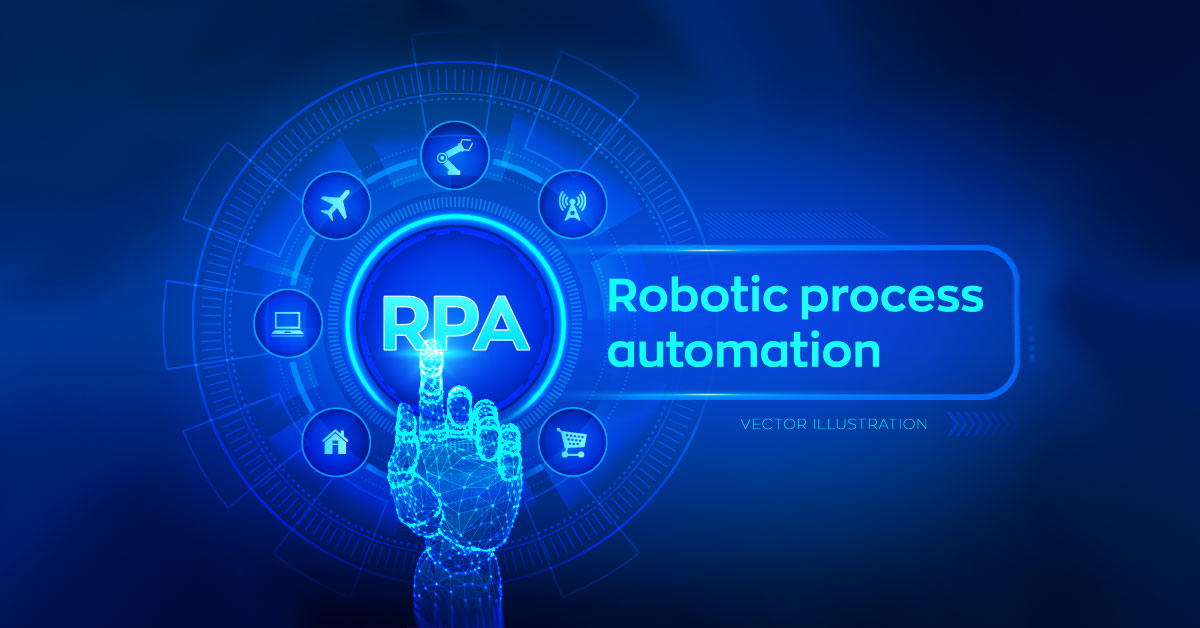Robotic Process Automation: Driving Innovation and Growth in Organizations

6 min read
Businesses are transforming due to robotic process automation (RPA), which enables them to automate repetitive and ordinary processes with previously unheard-of levels of efficiency. Through RPA technology, “bots” or software robots may do jobs across various applications by representing human actions. Businesses can cut manual employment dramatically by implementing RPA, which will save money and boost output. This overview of RPA lays the groundwork for examining its benefits, features, and effects in the broader industry.
What is RPA and How Does It Work?
RPA’s primary goal is automating repetitive and routine processes that clog up firms’ everyday operations. It builds software robots to simulate human-digital system interactions and carry out various tasks without human intervention. These jobs might be anything from straightforward data input procedures to intricate workflows, including system communication. Studying the technologies like artificial intelligence (AI) and machine learning that enable these bots to do jobs with extreme precision and dependability is essential to understanding the workings of robotic process automation (RPA).
Advantages of Implementing RPA in Organizations:
With the introduction of robotic process automation, organizations can look forward to a new era of employment optimization and operational efficiency. RPA has many advantages, including redefining roles, increasing worker satisfaction, and streamlining procedures. Let’s explore RPA’s disruptive impact on organizational operations in more detail.
-
Substantial decrease in processing durations and operational expenses:
The most noticeable effect of RPA is how much less time it takes to finish regular jobs. For instance, in the financial industry, bots can complete transactions or handle claims in a fraction of the time it would take a human worker to work around the clock without downtime or interruptions. This speed and the decrease in manual effort translate into immediate cost benefits for organisations. According to a case study from a multinational bank, they saved millions of dollars annually by reducing processing times by 70% by using RPA for loan processing.
-
Elevated Accuracy and Reduced Human Error:
Accuracy is essential in fields where even a tiny error can have far-reaching consequences. Tasks are completed precisely every time through RPA software designed to adhere to clear guidelines and standards. For example, robotic automation has been applied in the healthcare industry to manage patient records, where data entry accuracy is vital. By reducing human error and spending more time with patients rather than paperwork. And Healthcare practitioners have improved patient care by automating these procedures.
-
Enhanced Compliance and Easy Adherence to Regulations:
RPA solutions work well in settings with stringent compliance requirements. By automating all processes and actions, they offer an easily auditable, visible trail. They provide a means of expediting reporting and ensuring compliance with laws and regulations for financial organizations that have to meet strict compliance requirements. All without the lengthy human employment that was previously necessary. In addition to saving time, this automated compliance lowers the possibility of fines for non-compliance.
-
Boosting Employee Satisfaction and Productivity:
RPA’s effects on productivity and employee happiness are among its most important—yet underappreciated—benefits. Robotics frees workers to work on more significant projects that call for human decision-making and creativity by taking over routine and repetitive chores. Increased job satisfaction, lower attrition, and a more engaged staff are possible outcomes of this change. According to survey, organizations using RPA reported better employee engagement and chances for employees to seek more strategic and lucrative roles.
Common Misconceptions about RPA:
People often need to understand robotic process automation (RPA), which raises questions about potential job losses. And the belief that RPA is only appropriate for large organizations with intricate systems. Robotics aims to take over monotonous jobs rather than eliminate them, freeing staff members to concentrate on more important work that calls for human intelligence and inventiveness. Because of its adaptability and scalability, this automation technology is a valuable resource for companies of all sizes, not just big firms. It can help small and medium-sized businesses by cutting down on errors and increasing productivity without requiring a significant upfront investment or a total redesign of their current IT infrastructure.
Another widespread misconception is that RPA is complex and needs to adjust to new developments. It can be implemented quickly and easily because it is made user-friendly and easily connected with current software. Furthermore, RPA bots provide businesses with an adaptable solution that expands with them by being simple to update to handle new jobs or procedure changes. Dispelling these myths may enable companies to more accurately evaluate the advantages of RPA and consider how it might support increased productivity and creativity.
Challenges and Risks Associated with RPA Adoption:
While implementing RPA has many advantages, there are drawbacks as well. Integrating RPA with outdated systems can be challenging, and bots may occasionally malfunction and cause interruptions. It is essential to keep these bots updated; otherwise, they could become more of a burden than a benefit. Additionally, everything must be kept safe because bots frequently handle sensitive data, which raises the possibility of data breaches. Furthermore, not all employees may favour RPA adoption due to concerns about potential job losses.
To overcome these obstacles, we need a methodical approach. Testing RPA and resolving bugs before introducing it can help avoid problems later. Workers’ anxieties can be alleviated if they are informed that RPA will make their jobs easier and allow them to concentrate more on crucial duties. Prevent data breaches by implementing robust cybersecurity protocols. Organizations can seamlessly incorporate RPA and reap the benefits of enhanced efficiency and creativity while mitigating potential drawbacks by carefully addressing these difficulties.
Future of RPA: Emerging Trends and Technologies:
Future developments are expected to expand RPA’s potential and lead it towards even more innovation. For example, intelligent automation solutions that can handle complicated decision-making and learn from their actions are being created by combining AI and machine learning with RPA. As a result of this development, RPA will become more widely applicable and vital to digital transformation plans in many different sectors. A peek into the potential of RPA in the future and its ongoing influence on the corporate world can be obtain it by investigating these new trends and technologies.
Success Factors for Implementing RPA in Organizations:
Implementing RPA successfully depends on several important variables. The cornerstones include selecting the appropriate processes for automation, defining clear goals, and engaging in strategic planning. Equally important are gaining support from all organizational levels—from executives to front-line staff. And making sure everyone is aware of the advantages and improvements that robotic process automation (RPA) brings about. Furthermore, continuous bot maintenance and optimization are essential for optimizing RPA’s advantages.
Conclusion:
Robotic Process Automation (RPA) transforms the business landscape by automating repetitive operations, resulting in faster and easier work completion. It expedites the process, reduces expenses, enhances the calibre of output, and ensures strict adherence to regulations. The good news is that it frees up employees’ time from tedious chores so they may focus on more significant and fascinating projects. While there are misconceptions that RPA is too complex or unsuitable for small enterprises. The reality is that it is adaptable and can help organizations of all sizes by streamlining their operations.
With AI’s assistance, RPA should become even more intelligent in the future, able to handle increasingly tricky tasks and gain knowledge from them. Effective implementation of RPA requires thorough planning, ensuring company-wide buy-in, and ongoing process evaluation and improvement. Businesses can maximize RPA by addressing issues early on and staying current with technology. It is about more than just reducing expenses; it’s about creating new avenues for development and increasing work satisfaction for all parties. Adopting RPA is a step toward a future in which innovation and creativity will play a more significant role in the workplace.
Pranathi Software Services emerges as a strategic ally in negotiating the challenges of RPA deployment and capitalizing on its full benefits. Pranathi Software Services, which specializes in custom RPA solutions, enables companies to automate precisely and maximizes the potential of RPA to promote innovation, growth, and operational excellence. Whether improving healthcare accuracy, automating banking procedures, or creating innovative, brilliant retail experiences. Pranathi Software Services has the know-how and technological know-how to turn obstacles into chances for long-term success.
FAQ:
1. What distinguishes RPA from traditional automation?
RPA stands out by mimicking human interactions with digital systems to perform a wide range of tasks without manual intervention. Unlike traditional automation, which often requires complex programming and integration.
2. Can any business size customize RPA?
Yes, RPA’s scalability and flexibility make it suitable for businesses of all sizes. And allowing customization to meet specific operational needs and objectives.
3. How does RPA contribute to data security within an organization?
By automating data processing tasks, RPA minimizes human errors and enhances data privacy and compliance, reducing the risk of data breaches.
4. What roles do AI and machine learning play in the evolution of RPA?
AI and machine learning enrich RPA with intelligent decision-making and predictive analytics. And evolving bots from rule-based automation to adaptive and teaching entities.
5. What are the initial steps for an organization looking to implement RPA?
Successful RPA implementation begins with identifying repetitive, rule-based tasks suited for automation. Following this, the organization chooses the right RPA platform and ensures alignment with its digital strategy.
Published: April 26th, 2024





